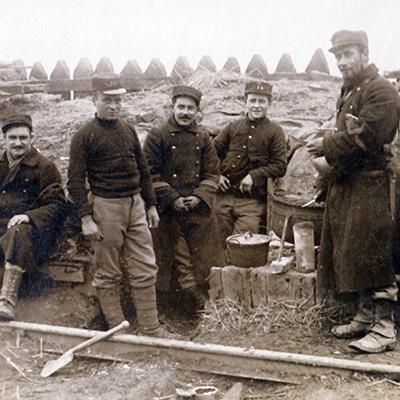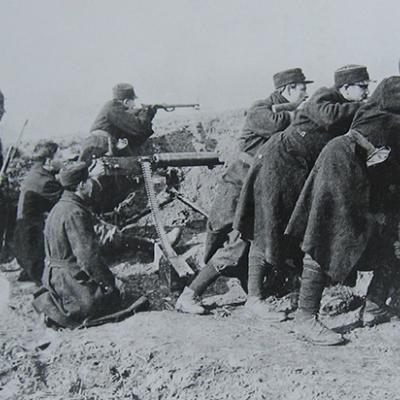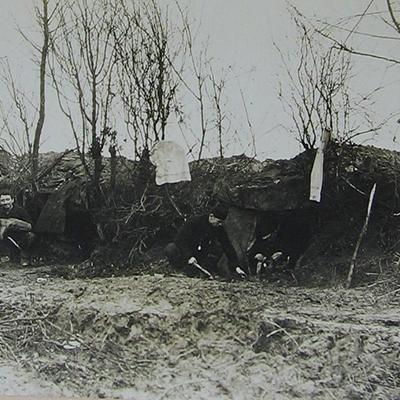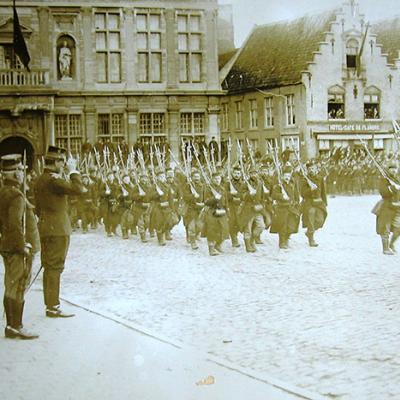Yser

After some breakouts from Antwerp a German force took to the offensive here as well. After the city’s capitulation on 10 October 33,000 fortress soldiers crossed the border with the Netherlands where they were interned. While covering their own cavalry forces as well as French and British naval forces the majority of the field army reached the Yser plain by mid October 1914.
When they withdrew to the Yser as natural line of defence the Belgian army only counted 75,000 men or 40% of the numbers at the time of mobilization. The actual Battle of the Yser began on 18 October. As from 25 October the Belgians started to close the passages underneath the railway bedding Diksmuide-Nieuwpoort. Following this, the water level was raised with sea water in various phases through the hydrologic complex of Nieuwpoort. This artificial inundation prevented a further German breakthrough and saved the exhausted Belgian army from total annihilation.
Until 10 November 1914 there was further fighting around Nieuwpoort, which remained in Belgian hands with French support, as well as around Diksmuide, which was eventually captured by the Germans. The Battle of the Yser inflicted 18,500 casualties in the Belgian army, including 3,000 dead. The German invasion had been brought to a halt, and Belgium had won respect.






